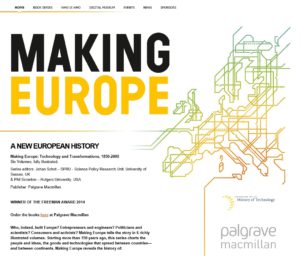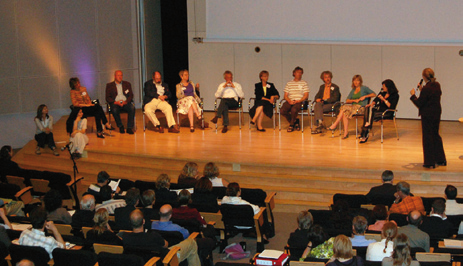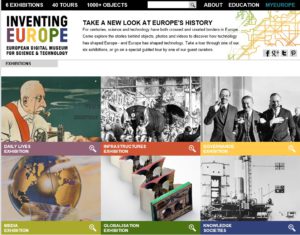Technology & European integration/fragmentation, ca. 1850-2000

European integration and fragmentation
Initiated in 1999, the first ToE flagship program addressed (and addresses) key debates of its time -- on globalization and Europeanization, most notably the founding, widening, and deepening of the European Union.
The argument: Existing EU-centered histories analysed the formal integration process: politicians negotiating treaties from the 1951 Paris Treaty (founding the European Coal and Steel Community) to the EU. By contrast, Tensions of Europe spotlighted a bottom-up, hidden integration through technology, which profoundly shaped European identities and everyday life: Since the 1850s at least, technology producers, regulators and users have connected and fragmented Europe by linking (or non-linking and de-linking) transnational infrastructure, and by circulating and appropriating knowledge, standards, artefacts, user practices, and so on.
The program developed in three overlapping phases.
I. Explorative phase (2000-2004)
Recognized as a European Science Foundation Network of Excellence, Tensions of Europe organized a series of 20 thematic workshops that expanded the network and explored the intellectual agenda. Central themes: the European city, transport and mobility, the rise of the consumer society, colonization and decolonization, agriculture and food, communication, large infrastructure systems, military technology, and information systems. For thematic publications click here. This work led to a joint research agenda presented at the first ToE Conference (Budapest, 2004): Inventing Europe: Technology and the making of Europe from 1850 to the present. By then, over 200 people from over 20 countries contributed to this endeavor.
Key insights:
- European integration involved a bottom-up, 'hidden' integration by technology producers and users. These actors linked-up Europe by linking technological infrastructure and circulating knowledge, artefacts, people, and practices;
- Europe's hidden integration accellerated already from the mid 19th Century--long before the formal, political European integration process took off;
- Europe's hidden integration co-existed with fragmentation. One needs to study linking as well as de-linking of infrastructure; transnational circulation as well as national and local appropriation of knowledge, artefacts, and user practices; and so on;
- Europe's hidden integration was a global process, crucially involving transatlantic and (post)colonial connections.
II. Research phase (from 2005)
The research agenda inspired and drew together a number of local and international research projects. These included:
- a prestigeous ESF-EUROCORES Collaborative Research Program Inventing Europe, sponsored by 11 national research councils. This program included 4 international projects:
- EUWOL European 'Ways of Life' in the American Century: Mediating Consumption and Technology in the Twentieth Century
- EUROCRIT Europe Goes Critical: The Emergence and Governance of Critical Transnational European Infrastructures
- SOFT-EU Software for Europe Constructing Europe through Software
- WRR The European Water, Road and Rail Infrastructure: A Geographical Information System for the History of the European Integration (1825-2010)
- READ: INVENTING EUROPE. FINAL REPORT (STRASBOURG: ESF, 2011)
- a Ph.D. program and the Karen Johnson Freeze Fellowship program to develop the field in Central and Eastern Europe;
- affiliated programs including:
- EUROTRANS
- EUROCOMMONS
- Experts in CEE
- Technology & Democracy
- Laboratoire d'Excellence EHNE « Écrire une histoire nouvelle de l’Europe »
- Imagined Europeans
Participants in discussion at the Inventing Europe opening conference
© The Foundation for the History of Technology
III. Synthesis phase (2011-2018)
The collaborative research resulted in the research and dissemination program Making Europe: Technology and Transformations, 1850-2000. The program shows how engineers, companies and citizens started building a united Europe more than 150 years ago by circulating goods, people, energy, ideas, and information between countries. Making Europe reveals the history of Europe that wasn't shaped by political treaties, but through day-to-day practices of companies, consumers and organizations via transnational networks and infrastructures. Making Europe results in a new history of Europe published in a six-volume book series (2013-2018) and an innovative virtual exhibit.
Current status
The first ToE flagship program, initiated in 1999, continues today, as the role of technology in European integration & fragmentation remains an important research topic. It also feeds into the Second flagship program Technology & Societal Challenges, as a program theme on "Europe in Crisis" -- noting that today the European Integration project itself is severely challenged (e.g. the Brexit, Grexit, Frexit debates), and that the EU developed a new identity as transnational problem solver addressing Europe's 'Societal Challenges.'

